https://weightliftingforpower.com/calf-exercises-with-dumbbells/
Calf Exercises With Dumbbells
Calves might not be the first thing you think about when planning a workout, but they’re more important than you might realize. These muscles play a huge part in almost every step you take, affecting your balance and posture. Keeping them strong can help you move more efficiently, whether walking to the store or sprinting down a track.
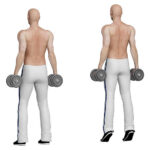
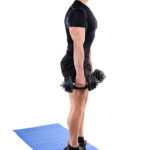
Strong calves do not support physical activities and help prevent injuries. Emphasizing these muscle groups in your workout regimen can minimize the likelihood of strains and sprains, especially in the lower legs and ankles. It’s like building a protective barrier for your legs.
Have you ever wondered how those top athletes seem to glide so effortlessly? Part of their secret lies in the power and stability of well-developed calf muscles. Strong calves contribute to better athletic performance, improving your jumping ability, speed, and overall agility on the field.
The payoff of developing your calf muscles doesn’t stop at the gym. Whether climbing stairs or standing for long hours, you’ll feel the difference in your stamina and fatigue levels. So, when you’re working on those strength exercises, remember the integral role your calves play in keeping you active and injury-free.
Selecting the Right Dumbbells for Calf Workouts

Getting the correct set of dumbbells can make a real difference in your calf workouts. It’s not just about picking the heaviest weights you can find; instead, you’re looking for dumbbells that suit your current strength level and can grow with you as your strength increases.
Think about what you want from your workout before selecting a dumbbell weight. If you’re starting, a lighter set might be best to get used to the movements without straining your muscles. For more advanced people, heavier weights can push your limits but must be manageable to ensure proper form.

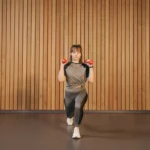
Cylinder shape, grip material, and whether the dumbbells are rubber-coated are all factors. These elements influence how the dumbbells feel during use and interact with different surfaces when you’re not using them. Investing in a set that feels good in your hands and suits your workout space can save you from unnecessary slips and surface damage.
Something worth considering is how adjustable dumbbells can offer flexibility in your routine. These are great if you add weight as you get stronger without buying multiple sets. They let you adjust weight increments, making it more straightforward to track progress and challenge yourself step by step.
For those on a budget, there are plenty of deals out there. You’d be surprised at the quality and variety without breaking the bank. Check out second-hand sports equipment stores or online marketplaces, where enthusiasts often sell gear in excellent condition.
Top Calf Exercises with Dumbbells for Maximum Gains
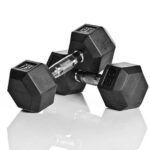
Getting the most out of your calf exercises means doing them right, and dumbbells are excellent for adding that extra bit of resistance to push your muscles further. Start with the bare calf raise exercise. Position your feet shoulder-width apart, grip dumbbells in each hand, and slowly elevate your heels off the floor. Hold at the top for a moment before lowering. It’s simple but incredibly effective for building those muscles.
Seated dumbbell calf raises mix things up by emphasizing different parts of your calves. Sitting down with weights on your knees, you lift your heels and feel the burn more deeply as you work your soleus muscles. This exercise is excellent for those wanting to achieve a more defined shape in their lower legs.
Standing soleus lifts with dumbbells is another way to target stubborn lower muscles. You’ll hold the dumbbells at your side, bend your knees slightly, and raise your heels. This minor tweak in knee bending shifts the focus, giving your calves an intense workout.
Try dumbbell walking calf raises if you want to add a fresh element to your workout. Holding a dumbbell in each hand, you’ll perform calf raises while moving forward. This exercise may appear easy initially, but it requires good balance and step coordination, making it a challenging but effective addition to your fitness routine.
Creating a Balanced Calf Training Routine
Crafting a workout plan that balances intensity and rest is key to progressing with your calf muscles. Start each session with a good warm-up. Engaging in simple exercises such as jumping jacks or brisk walking enhances circulation and strengthens your muscles, which is vital for avoiding strains.
Rest days aren’t just for lazing on the couch—they’re essential to your routine. Giving your calves time to recover after working out helps them repair and grow stronger. Skipping rest can lead to overtraining and potential injury, setting back your progress.
Including these dumbbell exercises as part of a broader leg workout not only enhances your calf strength but also supports your entire lower body. Calf exercises complement squats or lunges, contributing to better overall form and more balanced muscle development.
Keep track of your workouts to see how far you’ve come. Recording things like sets, reps, and weights can show improvements over time and push you to step up the challenge when needed. As you get stronger and more comfortable, gradually increase your weights or try more advanced variations to keep things fresh.
https://www.wealthyaffiliate.com?a_aid=352a86b2
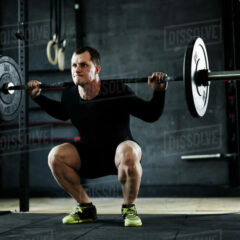



 Building comprehensive arm strength calls for a combination of both compound and isolation exercises. Compound movements like push-ups and pull-ups are your go-to for engaging multiple muscles. Push-ups, for instance, work the chest, shoulders, and triceps in one go, offering a full upper-body workout in a single move. Pull-ups, on the other hand, challenge your back and biceps, boosting overall arm strength.
Building comprehensive arm strength calls for a combination of both compound and isolation exercises. Compound movements like push-ups and pull-ups are your go-to for engaging multiple muscles. Push-ups, for instance, work the chest, shoulders, and triceps in one go, offering a full upper-body workout in a single move. Pull-ups, on the other hand, challenge your back and biceps, boosting overall arm strength.





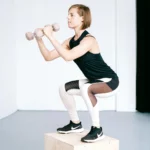

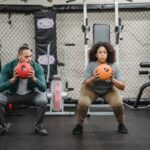


 Let’s get straight: core strength and power are not identical twins. Strength is about how much force your muscles can exert. Grasping this distinction is vital for comprehending how movement and energy interact and influence each other. Imagine lifting a heavy box versus tossing a basketball; strength helps lift, while power enables that swift throw.
Let’s get straight: core strength and power are not identical twins. Strength is about how much force your muscles can exert. Grasping this distinction is vital for comprehending how movement and energy interact and influence each other. Imagine lifting a heavy box versus tossing a basketball; strength helps lift, while power enables that swift throw.

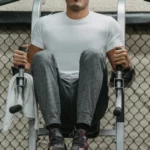

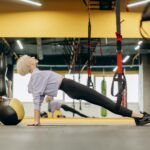
 Setting realistic goals is half the battle when it comes to core training. Identifying what you want to achieve is essential, whether it’s enhanced stability, strength, or even visual aesthetics. This clarity can guide your exercise choices and keep you motivated.
Setting realistic goals is half the battle when it comes to core training. Identifying what you want to achieve is essential, whether it’s enhanced stability, strength, or even visual aesthetics. This clarity can guide your exercise choices and keep you motivated.